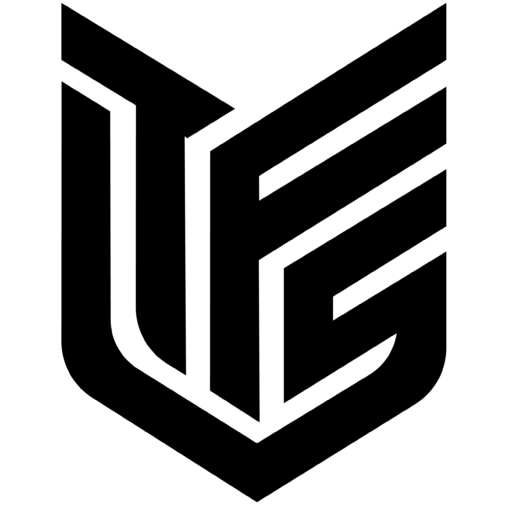Maximum strength
In developing sport-specific strength, maximal strength plays a very important role. While each of the previously described (anatomical adaptation and hypertrophy) has its place and is extremely important, it is strength that has a tremendous impact on an athlete’s performance and performance during the season.

When?
Before we discuss the phase of maximal strength in detail, you must know the basic mechanisms behind this ability. These include the mechanism of muscle contraction and the neural adaptations described next. As a reminder, below I also provide an example of the location of the maximal force phase (Force MxS) in the periodization of this ability.

The power of contraction
In order for our body to perform any movement, the central nervous system must send a signal to initiate muscle contraction. This happens under the influence of stimulus and electrical impulse, neurotransmitter (acetylcholine), calcium ion reaction and ATP hydrolysis, among others. The main unit responsible for muscle contraction is the sarcomere, made up of contractile proteins including actin and myosin. The interaction between these two proteins causes contraction.
The force of contraction of a muscle (and therefore the maximum force) depends on the following factors:
- The number of motor units stimulated
- The cross-sectional area (CSA) of the muscle fiber
- The frequency of excitations (rate coding)
- The initial length of the muscle – the muscle develops the greatest force of contraction when it is in the state of resting length. As the muscle stretches, the number of myosin-actin connections decreases, which reduces the force of contraction (Gorski 2019)
As we know, muscles use 3 types of tension: eccentric, isometric, and concentric contraction. Of these 3 contractions, the greatest tension is developed during eccentric work (up to 140% of concentric contraction), followed by isometric work (up to 120% of concentric contraction).

Central Nervous System Adaptation
Neural adaptation to strength training includes decreased inhibitory activity (reflex response, “stretch reflex”) as well as intra- (intra-) and inter-muscular coordination. Reduction in the activity of these mechanisms affects:
- Golgi tendons organs (GTO) – receptors located in the tendon near its transition into muscle tissue. They evoke a reflex reaction in the form of tension reduction (relaxation) of the muscle when too much tension threatens to tear its attachments.
- Renshaw cells – inhibitory connection neurons (interneurons) whose role is to slow the discharge rate of alpha motor neurons, thus preventing muscle damage caused by tetanic contraction (high and constant tension)
- Supraspinal inhibitory signals – conscious or unconscious inhibitory signals that originate in the brain (Bompa 2015)
Neuromuscular coordination
Neuromuscular coordination refers to two types of coordination:
- intramuscular coordination refers to the interaction between muscle fibers of only one muscle.
- Intermuscular coordination refers to the coordination between different muscle groups, e.g. between an agonist and an antagonist.
Intramuscular coordination consists of the following components:
- Synchronization – the ability of motor units to contract simultaneously or with minimal delay (this delay is less than 5 milliseconds). This is the synchronization of the tensions of different muscle fibers in a single muscle group.
- Recruitment – The ability to simultaneously recruit motor units in a given muscle group. A trained individual is able to recruit more motor units than an untrained individual.
- Stimulation rate coding – the ability to increase the frequency and amount of stimulation (rate of discharge of motor units) to express greater force
Intra-muscular adaptation has a high ability to transfer from strength training to sport training provided the movement pattern of the muscle group is maintained. The main purpose of the maximal force phase is to increase the ratio of recruited motor units of the major muscle groups used in the discipline. In contrast, the power phase that follows is designed to increase the rate of excitation, allowing large amounts of force to be used in a shorter period of time.
The greatest intramuscular adaptations occur during training at loads >80% of maximal weight. However, training periods at this load should be relatively short and interspersed with the second spectrum of adaptations.
Intermuscular coordination
Intermuscular adaptation is the ability of the nervous system to coordinate the connection of kinetic chains and therefore make movement more efficient. Over time, as the nervous system learns a movement it becomes possible to use fewer motor units for the same weight. This allows more motor units to be activated and used at higher loads. For this reason, in order to increase the weight lifted in a given exercise, intermuscular coordination (technique) is of great importance.
The greatest intermuscular adaptations occur when training with loads <80% of the maximum weight. For neuromuscular adaptations, we must use the full spectrum of intensities.

Źródło: YLMSPORTSCIENCE
Principles of strength training
Any strength program is designed to enhance an athlete’s performance over the long term. For this reason, it should be built on the following principles:
- Progressive increase in load
- Variety – refers to the range of motion, type of exercise, load variability, rate of strength and speed development, training methods used
- Individualization – training adapted to the age, gender, level of training and individual needs of the athlete
- Specificity – training specific to a particular movement, specific strength, specific energy systems and a particular sport
What maximal strength depends on
It was once thought that muscle fiber size (cross-sectional area of a muscle cell, “CSA”) had the greatest influence on strength. For this reason training was mainly focused on muscle growth. Today we know, knowing the above facts, that the most important factor for strength growth is neural adaptations. Central nervous system (CUN) adaptations are manifested by, among other things, a decrease in antagonist activity during muscle work, allowing the agonist to generate more force.
The ability to generate force depends on:
- Intermuscular coordination – the ability to synchronize multiple muscle groups involved in a movement
- Intramuscular coordination – the ability to involuntarily recruit as many motor units as possible and to maximize the rate of excitation (frequency of signals sent)
- Hypertrophy – the diameter or cross-sectional size of the muscle involved
Thus, an athlete need not only strive to increase muscle mass. His goal should be to increase coordination between muscle groups and recruit a large number of motor units (responsible for performance during sport) by using weights >80%1RM. Maximal strength will then be increased.

Maximal Strength Phase
The main goal of the maximal strength phase is to develop the highest possible level of strength. This goal can only be achieved by applying heavy loads >70-90% of maximal weight (90-100% also, but less frequently). It has been shown in studies (Moritani and deVaries 1979; Rasmussen and Philips 2003) that a rapidly increased level of maximal force by training with loads >85%1RM (intramuscular coordination) is not stable. Achieving full maximal strength potential and stabilizing it requires training the full spectrum of intensities, including weights <80%1RM.
Carlo Buzzichelli and Tudor Bompa in their book propose the use of two types of macro-cycles in the maximal strength phase:
- MxS Phase I – consists of 1-2 macrocycles of the 3+1 type (3 weeks of intensification + 1 week of deload), during which the training load increases gradually from weights 70-80%1RM. The goal of the macro-cycle is to induce intermuscular adaptations
- MxS Phase II – consists of 1-2 2+1 macrocycles (2 weeks of intensification + 1 week of deload) during which the training load is gradually increased from 80-90%1RM. This macro-cycle mainly focuses on intramuscular adaptation.
Characteristics of the maximal strength phase
The length of the maximal strength phase ranges from 1 to 3 months, depending on the nature of the sport and the individual athlete’s needs. For example, an American soccer player will need more time in this phase (~3 months) while a cyclist will need much less (~1 month). The load can be increased over 3- to 4-week training cycles (2+1 or 3+1) and is typically increased by 2-5% each week (micro-cycle).
The duration of this phase also depends on the type of annual plan (mono-cycle, bi-cycle, tri-cycle) and the biological age of the athlete. For obvious reasons, young athletes will have a short maximal strength phase with less load (intermuscular coordination). The maximal strength phase is characterized by relatively high number of series, low repetition range and low number of exercises.
Training parameters for developing maximal strength:
- 70-80%1RM during the first cycle of the maximal strength phase (up to 100%1RM during strength testing)
- 80-90%1RM during the second cycle of the maximal strength phase – intramuscular coordination – (up to 100%1RM during strength testing)
- 2-5 main exercises, 1-3 accessory exercises
- 1-5 repetitions in the main exercises, 8-12 repetitions in the accessory exercises
- 2-8 series in main exercises, 2-3 series in accessory exercises
- 5-20 seconds of time under tension (TUT)
- 120-300 seconds of rest between series in main exercises and 60-120 seconds in accessory exercises
- number of workouts per week: 2-4
Maximal strength – training methods
The most optimal for developing maximal strength is the sequential use of sub-maximal and maximal methods. For most athletes, simple methods and progressive loading will be the best choice. However, as time passes and sophistication increases, it becomes necessary to use other methods to break stagnation.
These treatments include:
- Load management over the microcycle and macrocycle (waveform, coupled periodization)
- Selecting the type of muscle work for each training unit (separate use of eccentric, isometric and concentric phases, e.g. triphasic training)
- Eccentric method with supra-maximal weight (110-140%1RM)
- Isometric method (80-100% 1RM or overcoming isometric)
- Manipulation of the speed of individual phases (tempo)
- Use of the dynamic method
- Oscilating Isometric
- Yelding Eccentric
If you need a tool to help and speed up your workout planning see our TFS Exercise Atlas.
Summary
Maximal strength should be included in an athlete’s annual training plan. Strength determines the development of other motor skills like power and speed, which are often responsible for sports performance. The length of the maximal strength phase depends on the nature of the discipline and the individual needs of the athlete. The basic principle of strength training is progressive overloading. Other training methods can be used to break stagnation.
Would you like someone to take care of your training and guide you in this process? We would love to help you achieve your goal 😉 Choose PROGRAM for you or contact us HERE.
Bibliography:
- T. Bompa, C. Buzzichelli (2015), Trening periodyzacyjny w sporcie, Human Kinetics
- D. Joyce, D. Lewindon (2014), Trening wyczynowy w sporcie.
- J. Górski (2019), Fizjologia wysiłku i treningu fizycznego, PZWL, Warszawa
- Moritani T. i deVaries H.A. (1979), “Neural factors versus hypertrophy in the time course of muscle strength gain”, American Journal of Physical Medicine, 58 (3), pp. 115-130.
- Stone M. et al. (2006), “Maximum strength and strength training – A relationship to endurance?”, National Strength and Conditioning Association Journal, 28(3):44-53.
- Howatson G. et al. (2016), “The Response to and Recovery From Maximum-Strength and -Power Training in Elite Track and Field Athletes”, International Journal of Sports Physiology and Performance, 11(3):356-62.




